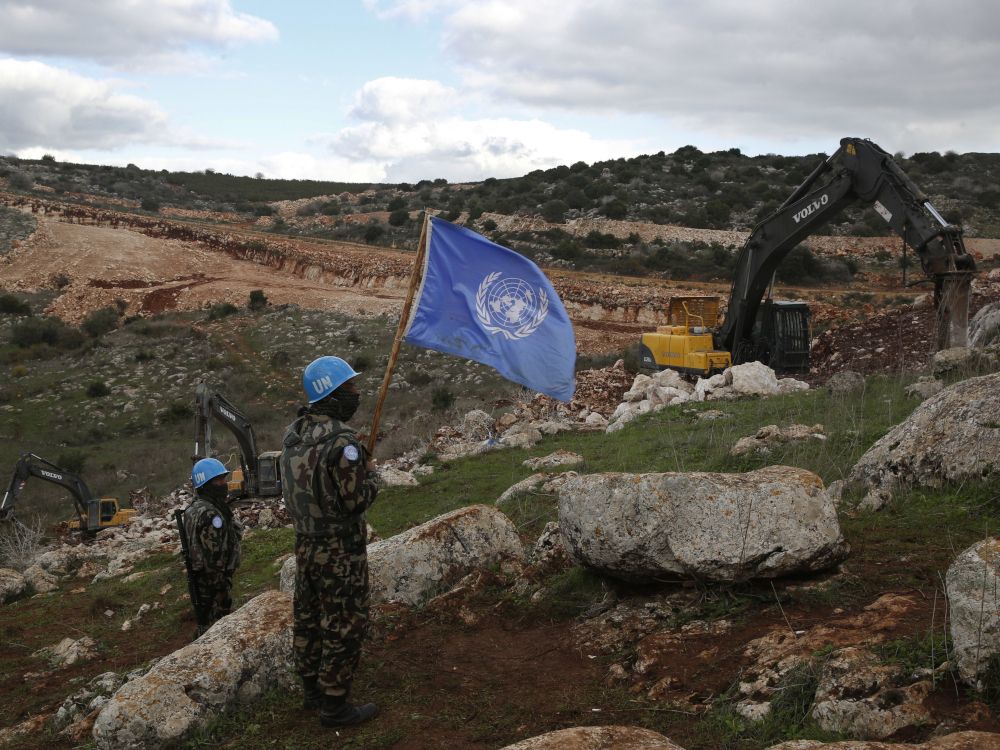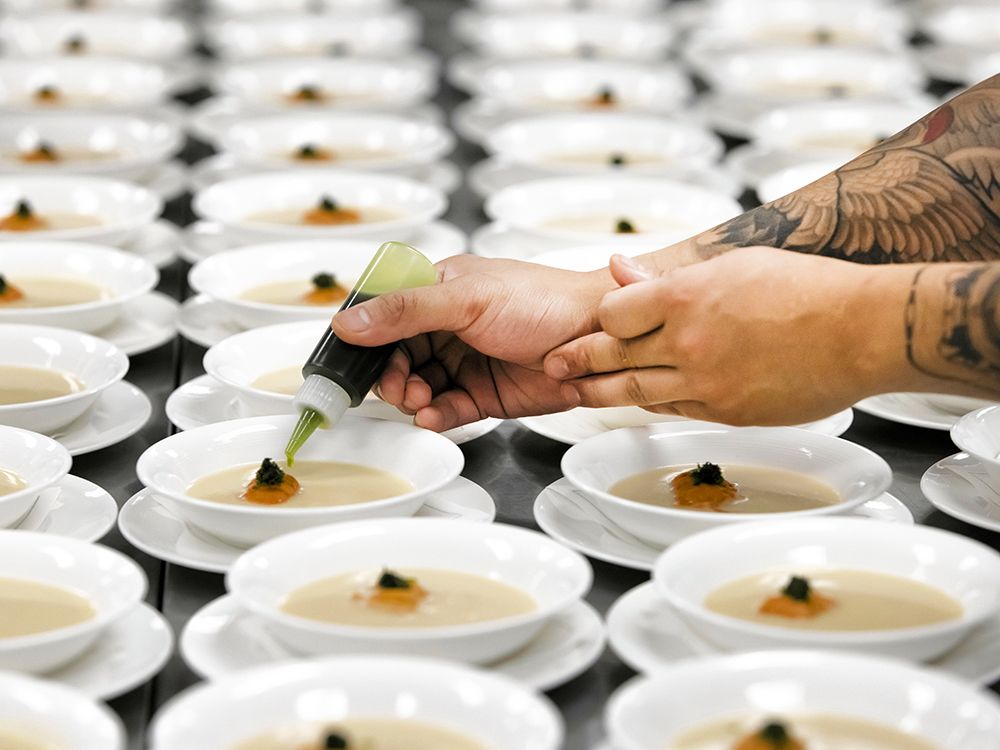Authors call for changes to dairy supply management system and increased industry transparency on how much is going down the drain
Published Oct 18, 2024 • Last updated 0 minutes ago • 4 minute read

Don’t beat yourself up the next time you toss some yogurt slightly past its expiration date or the mildly moldy cheese you don’t want to cut around – billions of litres of raw milk used to make those and other dairy products went down the drain long before it left the farm, a new study suggests.
As published in the journal Ecological Economics, the authors’ low-end estimate for milk that “vanished” from Canadian dairy farms between 2012 and 2021 at over 6.8 billion litres. By their accounting, that amount – enough to provide for 11 per cent of Canada’s population – would have had a retail value of $6.7 billion.
Advertisement 2
THIS CONTENT IS RESERVED FOR SUBSCRIBERS
Enjoy the latest local, national and international news.
- Exclusive articles by Conrad Black, Barbara Kay and others. Plus, special edition NP Platformed and First Reading newsletters and virtual events.
- Unlimited online access to National Post and 15 news sites with one account.
- National Post ePaper, an electronic replica of the print edition to view on any device, share and comment on.
- Daily puzzles including the New York Times Crossword.
- Support local journalism.
SUBSCRIBE FOR MORE ARTICLES
Enjoy the latest local, national and international news.
- Exclusive articles by Conrad Black, Barbara Kay and others. Plus, special edition NP Platformed and First Reading newsletters and virtual events.
- Unlimited online access to National Post and 15 news sites with one account.
- National Post ePaper, an electronic replica of the print edition to view on any device, share and comment on.
- Daily puzzles including the New York Times Crossword.
- Support local journalism.
REGISTER / SIGN IN TO UNLOCK MORE ARTICLES
Create an account or sign in to continue with your reading experience.
- Access articles from across Canada with one account.
- Share your thoughts and join the conversation in the comments.
- Enjoy additional articles per month.
- Get email updates from your favourite authors.
THIS ARTICLE IS FREE TO READ REGISTER TO UNLOCK.
Create an account or sign in to continue with your reading experience.
- Access articles from across Canada with one account
- Share your thoughts and join the conversation in the comments
- Enjoy additional articles per month
- Get email updates from your favourite authors
Article content
While not directly linked to wastage, per se, prices for Canadian dairy products over that time increased steadily and the country remains one of the most expensive nations in the world for such items, averaging more than $3 per litre according to Stats Canada.
Milk wastage is not new – it’s been happening for decades – but it is decreasing somewhat in Canada. The authors wrote that the reduction in recent years is likely due to better farm management, stricter regulatory adherence, improved supply chain co-ordination and processing technology refinement allowing farmers to more closely match production with market demand.
Recommended from Editorial
-

The former Liberal MP trying to foment a milk rebellion
-

Exporters 'confident' senators will scrap Bloc’s supply management bill
“It’s not abnormal to have surpluses. It’s quite normal, in fact,” Sylvain Charlebois, study co-author and head of the Agri-Food Analytics Lab at Dalhousie University, told The National Post.
“What’s disappointing is that there’s no strategy for surpluses at all.”
System overhaul needed
The study, which was precipitated by a 2023 video of a Canadian farmer bemoaning wasted milk surplus, explores purported inefficiencies in the dairy supply management system (DSMS) overseen by the Canadian Dairy Commission (CDC), a crown corporation established in 1966.
By signing up you consent to receive the above newsletter from Postmedia Network Inc.
Article content
Advertisement 3
Article content
“I think the core system actually can work, should work, but supply management is not perfect and we need to talk about some of the flaws openly,” explained Sylvain Charlebois.
“With supply management, we shouldn’t be allowing anybody to dump anything.”
The authors admit the DSMS, operational since 1971, is not the only factor leading to farmers dumping milk down the drain. They found that “low market demand, limited processor capacity, presence of antibiotic residues, or damaged farm infrastructure” also played a part.

However, they suggested the DSMS routinely results in excess supply because farmers are “incentivized” to go beyond their quota rather than risking producing too little – losing money and facing stiffer penalties.
To better understand how to address any flaws within the system, the authors suggested better data collection on the amount of milk actually wasted.
Those numbers, the study notes, are sparsely available across Canada, forcing the researchers to establish their findings on estimated figures.
In an emailed statement, Jacques Lefebvre, CEO of the Dairy Farmers of Canada, noted several of the authors’ conclusions were not based on “robust data” and “would need to be validated independently.”
Advertisement 4
Article content
He said surpluses are normally linked to supply chain issues and that “milk is only disposed of as a last resort after exploring all other alternatives.”
For his part, Charlebois wonders why the CDC won’t do for milk what was done for butter when it created a federal butter reserve in Montreal that houses thousands of kilograms.
In an email response to questions from The National Post, the CDC said the study’s methodology led to “several unverifiable assumptions” and “a theoretical production figure” that doesn’t align with industry numbers.
“It is not accurate to assume that the difference between this theoretical figure and sales data demonstrate milk that goes unmarketed.”
The CDC says of the 9.6 billion litres produced over the last year, more than 99 per cent was processed and marketed and that the disposal of large volumes rarely occurs.
“Producers in Canada have production quotas with flexibilities based on Canadian demand to ensure that milk does not go unmarketed,” the statement reads. “That is part of the role of supply management.”
The organization also highlighted the various programs supporting processing investment innovation in Canada’s dairy industry.
Advertisement 5
Article content
Transparency lacking
Charlebois said the industry may be government-sanctioned, but it’s mostly “self-regulated” and the collection of such data isn’t enforced and even if it were, there would be little will from within for its public distribution.
“They don’t want Canadians to know, because as soon as people learn that we’re dumping so much milk, (they’ll ask), “How come milk is so expensive?
“They don’t want to say, ‘We can always repurpose some of the surpluses and put that back into the market to put downward pressure on the prices. That’s the game and that’s why they’ve they’ve always avoided talking about dumping.”
In addition to seeking more transparency on surplus milk, other recommendations on reforming the DSMS include making overproduction less incentivized by penalizing it more than underproduction and updating the CDC Act to make it illegal to dump milk that meets food safety standards.
In its response to The National Post, the CDC did not reply to a question surrounding the lack of data on milk surplus.
Our website is the place for the latest breaking news, exclusive scoops, longreads and provocative commentary. Please bookmark nationalpost.com and sign up for our daily newsletter, Posted, here.
Article content
.png)
 2 hours ago
8
2 hours ago
8




































 Bengali (BD) ·
Bengali (BD) ·  English (US) ·
English (US) ·